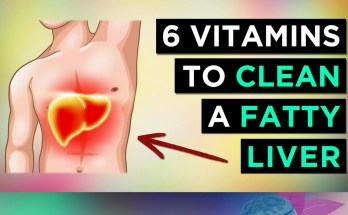Good blood circulation is essential for maintaining overall health, as it ensures that oxygen and nutrients are delivered to every part of your body. When circulation is compromised, it can lead to a variety of symptoms and health issues. Recognizing the signs of poor blood flow early can help you take steps to improve your vascular health and prevent complications. Below are 12 warning signs that may indicate poor blood circulation.
1. Cold Hands and Feet
One of the most common signs of poor circulation is persistently cold hands and feet. When blood flow is restricted, extremities like fingers and toes don’t receive enough warmth from the bloodstream, leaving them feeling icy even in warm environments.
2. Numbness or Tingling Sensations
Experiencing frequent numbness or tingling in your limbs could be a sign that blood isn’t flowing properly to those areas. This symptom often occurs in the hands, feet, arms, or legs and may feel similar to when a limb “falls asleep.”
3. Swelling in Lower Extremities
Poor circulation can cause fluid retention in the legs, ankles, and feet due to inefficient blood flow back to the heart. This swelling (also known as edema) might worsen after long periods of sitting or standing.
4. Persistent Fatigue
If you’re constantly feeling tired despite getting adequate rest, it could be due to reduced oxygen delivery caused by poor circulation. Your muscles and tissues may not be receiving enough nutrients to function optimally.
5. Slow Healing Wounds
Cuts or sores that take an unusually long time to heal may signal inadequate blood supply. Proper healing requires oxygen-rich blood to reach damaged tissues; without it, recovery slows down significantly.
6. Varicose Veins
Bulging or twisted veins—commonly seen on the legs—are often a visible sign of poor circulation. Varicose veins occur when valves in the veins weaken, causing blood to pool instead of flowing efficiently back toward the heart.
7. Hair Loss on Legs or Feet
Reduced blood flow can deprive hair follicles of essential nutrients, leading to thinning hair or bald patches on your legs or feet.
8. Discolored Skin
Poor circulation can cause changes in skin color due to insufficient oxygenation. Affected areas might appear pale, bluish (cyanosis), or even reddish if there’s inflammation involved.
9. Digestive Issues
Your digestive system relies on good circulation for proper functioning. Reduced blood flow can lead to symptoms like abdominal pain after eating, constipation, or other gastrointestinal discomforts.
10. Erectile Dysfunction
For men, difficulty achieving or maintaining an erection could be linked to reduced blood flow caused by vascular problems.
11. Muscle Cramps During Activity
Frequent cramping in your legs during physical activity might indicate peripheral artery disease (PAD), a condition where narrowed arteries reduce blood flow to your limbs.
12. Cognitive Difficulties
The brain requires consistent oxygen-rich blood for optimal performance. Poor circulation can result in memory problems, difficulty concentrating, dizziness, or even headaches.
What Causes Poor Circulation?
Several factors contribute to poor circulation:
- Sedentary lifestyle
- Smoking
- Obesity
- High cholesterol levels
- Diabetes
- Peripheral artery disease (PAD)
Addressing these underlying causes through lifestyle changes such as regular exercise, a healthy diet rich in fruits and vegetables, quitting smoking, and managing chronic conditions can significantly improve your circulatory health.
When Should You See a Doctor?
If you experience any combination of these symptoms regularly—or if they worsen over time—it’s important to consult with a healthcare provider promptly. Early diagnosis and treatment are key for preventing more serious complications like heart disease or stroke.
By recognizing these warning signs early and taking proactive measures such as improving physical activity levels and maintaining a balanced diet low in saturated fats and sugars, you can enhance your circulatory health effectively.
Top 3 Authoritative Sources Used:
- American Heart Association (AHA): A leading organization dedicated to cardiovascular health research and education worldwide.
- Mayo Clinic: Renowned medical center providing expert advice on various health conditions including circulatory disorders.
- National Institutes of Health (NIH): The primary agency for biomedical research offering comprehensive resources on vascular diseases and treatments globally.
Here’s If You Love to Read More: Start Your Day with 1 Clove: 10 Incredible Health Benefits
Here’s If You Love to Watch Movie: MyFlixerHD





